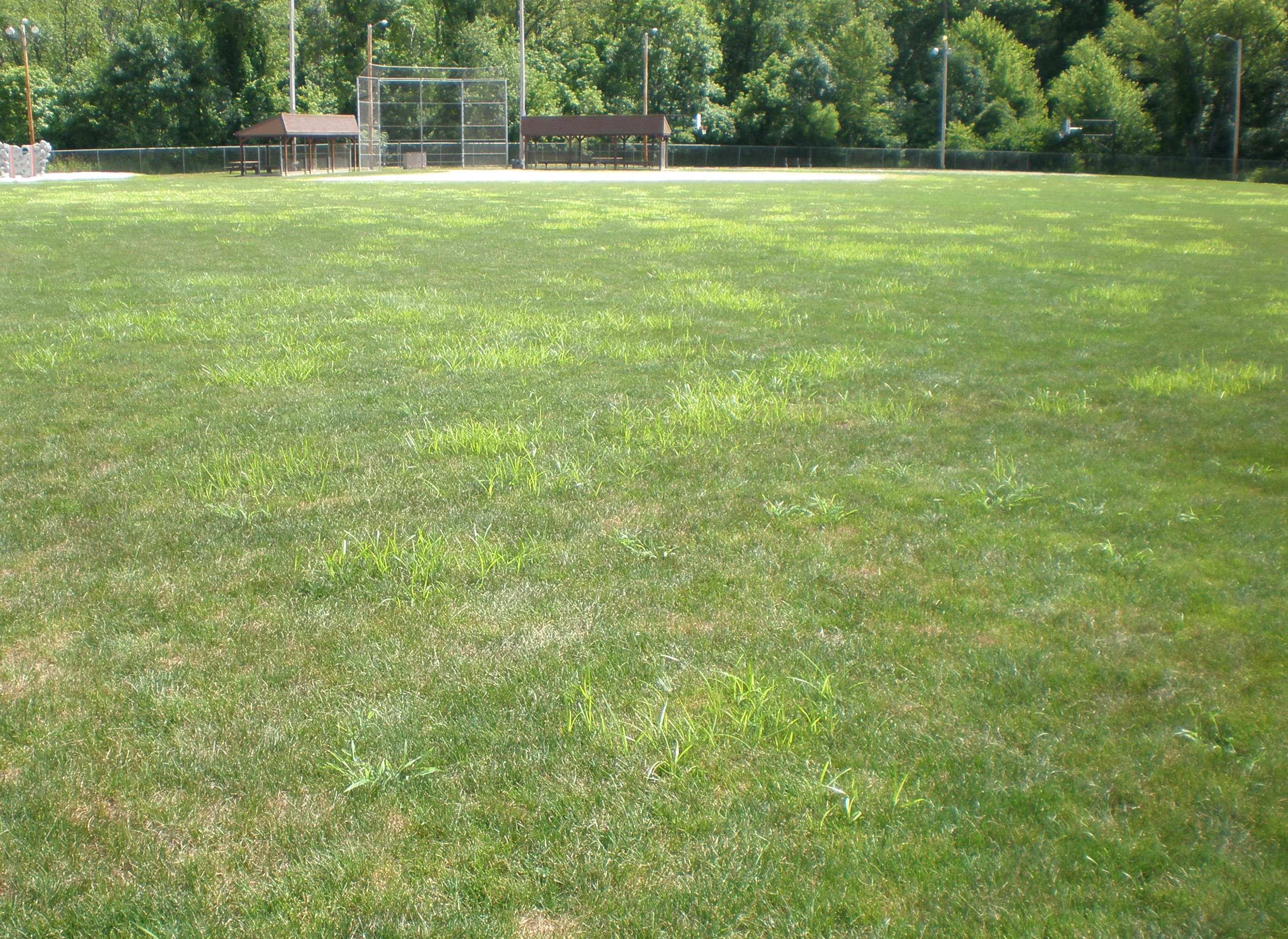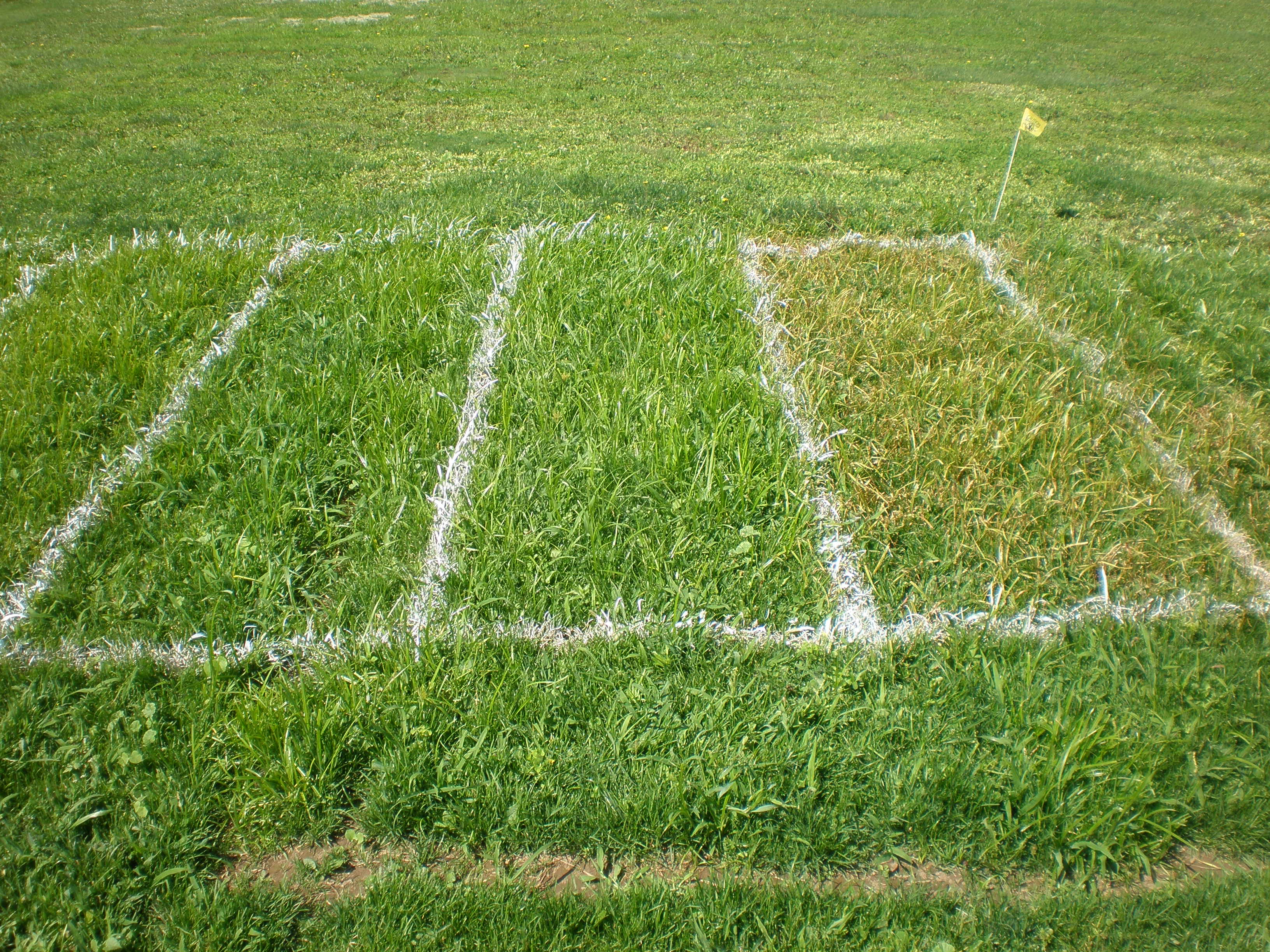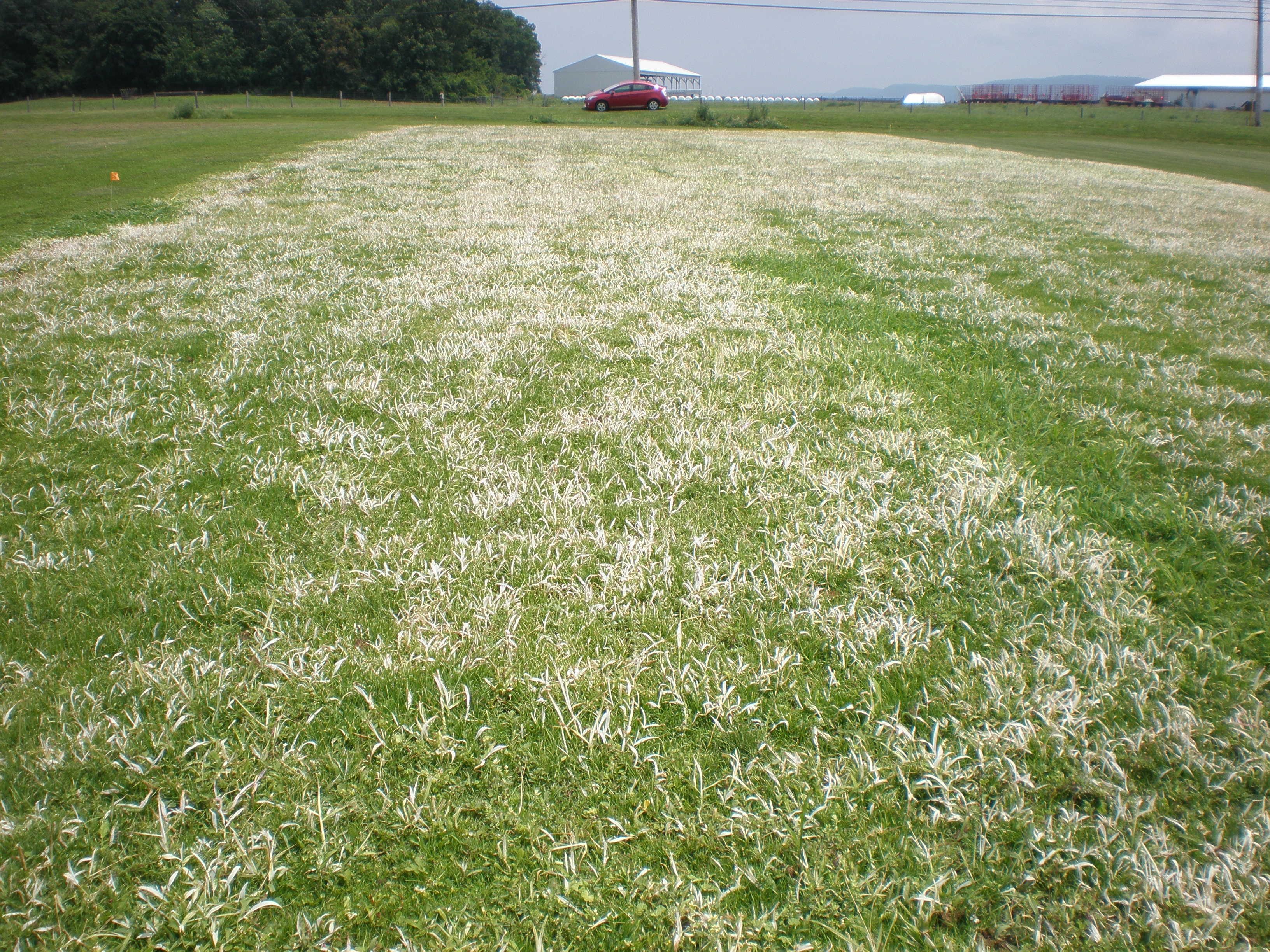Control of Yellow Nutsedge in Pennsylvania Lawns and Athletic Fields
June 10, 2014 in Articles, Extension
by Pete Landschoot, Professor of Turfgrass Science; and Tanner Delvalle, Horticulture Extension Educator
Yellow nutsedge may not be the worst weed problem in Pennsylvania lawns and athletic fields, but when conditions are right, it can certainly be a nuisance. Fortunately, nutsedge is relatively easy to control when using the proper herbicide at the correct stage of growth.
Yellow nutsedge is a perennial weed with coarse, shiny foliage and three-sided stems. It spreads via extensive rhizomes and tubers (often called nutlets), and is often found in poorly-drained areas and in newly established turf. The most effective control of nutsedge with herbicides is obtained when foliage is visible in the turf canopy (3-8 leaf stage), and before tubers mature in early July. It’s important to treat nutsedge before tubers form because these underground structures can give rise to many new plants in subsequent years.
Herbicides labeled for control of yellow nutsedge in cool-season turf include halosulfuron-methyl (Sedgehammer and Prosedge), sulfentrazone (Dismiss), bentazon (Basagran T/O), and mesotrione (Tenacity). Sulfentrazone is also contained in the combination products Solitaire (sulfentrazone and quinclorac), and Echelon (sulfentrazone and prodiamine).
Sedgehammer (Gowan Co.) and Prosedge (Nufarm US) both contain the active ingredient halosulfuron-methyl, a sulfonylurea herbicide with systemic activity. Both products are labeled for use on most cool-season grasses. Rates of the WDG formulation of Sedgehammer are extremely low (2/3 to 1 1/3 oz of product per acre), and the label suggests adding a non-ionic surfactant at 0.25% v/v to the spray solution for optimum control. Sedgehammer+, is a dry blended product which contains halosulfuron plus a dry surfactant. This product is sold as a single-use, 0.5 oz packet which is designed to be mixed in 1 gallon of water and will treat 1000 sq ft. If you only need to make spot treatments, the WDG formulation of Sedgehammer is available in small (1.3 oz) bottles; enough to treat one acre. Simply mix 0.9 gram of this product (using the measuring scoop provided with this product) in 1 or 2 gallons of water to treat 1000 sq ft. Directions call for the addition of 2 teaspoons (1/3 fl oz) of a nonionic surfactant per gallon of water. If needed, another application can be made 6 to 8 weeks after the initial application.
Sedgehammer and Prosedge are most effective when applied to nutsedge at the 3 to 8 leaf stage of growth. Although very effective, these products act slowly. In a trial conducted at Penn State last summer, injury symptoms following a Sedgehammer treatment did not become visible until about a week after application, with complete desiccation occurring 3 to 4 weeks later. Although slow acting, the active ingredient will eventually translocate to the rhizomes and tubers and kill the entire plant. For best results, do not mow 2 days before or after application.
Basagran T/O (BASF) has been a standard nutsedge herbicide for many years. The active ingredient, bentazon, inhibits photosynthesis in susceptible weeds. This contact herbicide is relatively fast acting, with injury symptoms on nutsedge appearing within about 5 to 7 days of application. Basagran is formulated as a liquid and the rate listed on the label for nutsedge control is 2 pints/acre (0.75 fl oz per 1000 sq ft), with a second application 10 to 14 days later if needed.
Basagran T/O can be used on established Kentucky bluegrass and fescues. Injury has been observed with this product on perennial ryegrass so use caution if the turf contains this species. Basagran also controls some broadleaf weeds, including chickweed, purslane, spurge, and Canada thistle. Trials at Penn State indicate Basagran T/O is very effective for yellow nutsedge control using a single application of 2 pints/acre.
Dismiss (FMC Corp.) is another contact herbicide labeled for control of yellow nutsedge and contains sulfentrazone as the active ingredient. Sulfentrazone is classified as a protox inhibitor, a group of herbicides characterized by their disruptive effects on membrane function. In contrast to halosulfuron-methyl, this herbicide is very fast acting. Dismiss is labeled for use on most turfgrasses grown in Pennsylvania, but can cause phytotoxicity on some cultivars of fine fescues. Rates for Dismiss on cool-season grasses range from 4 to 8 fl oz product/acre, and no surfactant is required. In fact, we have received reports of turfgrass injury when a surfactant has been added to Dismiss at high rates. In some cases, a second application of Dismiss may be made 30 days following the first application. The annual limit of Dismiss is 12 fl oz/acre per year.
Dismiss is very popular among turf managers because it can desiccate nutsedge foliage within a few days of application. A recent test at Penn State showed pronounced injury symptoms on nutsedge two days following an early July application, and treated plants were no longer visible in the stand 10 days after application. Studies at the University of Maryland and other locations have demonstrated some preemergence control of nutsedge following spring (April) applications of Dismiss. Although preemergence control is usually not 100%, this approach can reduce the number of plants that emerge in early summer.
Although the combination products Solitaire (sulfentrazone and quinclorac), and Echelon (sulfentrazone and prodiamine) were not included in our 2013 trial, Solitaire is being used by practitioners in Pennsylvania and is labeled for control of both crabgrass and nutsedge. Echelon is labeled for pre- and early post control of crabgrass and for nutsedge.
Tenacity (Syngenta) is a popular herbicide that controls stubborn grassy weeds in lawns and sports turf such as bentgrass, nimblewill, crabgrass, and nutsedge. The active ingredient is mesotrione; a carotenoid inhibiting compound that causes susceptible plants to turn white. Tenacity has systemic activity, but is somewhat slow-acting. White plants create highly visible treatment effects, which may be objectionable in some cases. However, Tenacity has the advantage of being safe on newly-seeded turf (except fine fescues), and can provide some pre and post control of crabgrass. Hence, this herbicide may be a good choice if young crabgrass plants are present with nutsedge in the same stand.
Tenacity product rates range from 5 to 8 fl oz/acre for Kentucky bluegrass and tall fescue, and up to 5 fl oz/acre on fine fescues and perennial ryegrass. A maximum annual rate of 16 fl oz/acre is listed on the label. For optimum control of nutsedge, apply Tenacity with a non-ionic surfactant. In addition to controlling some grassy weeds, this herbicide controls or suppresses a number of broadleaf weeds as well.
A recent trial at Penn State showed excellent control of yellow nutsedge infesting a new stand of Kentucky bluegrass using a single application of 8.0 fl oz product/acre. Although the nutsedge and crabgrass in the treated area remained white for 3 to 4 weeks, the weeds were killed and a follow-up application was not necessary. No injury was observed on the Kentucky bluegrass.




